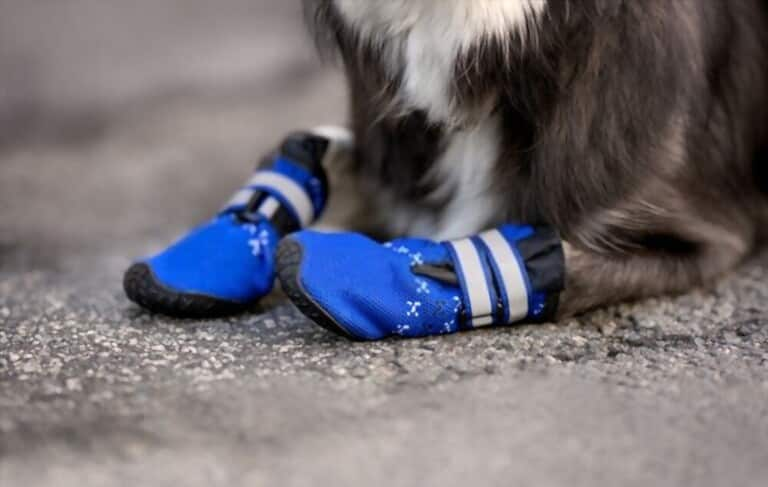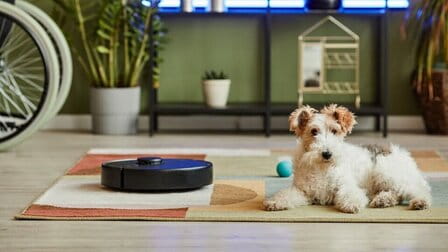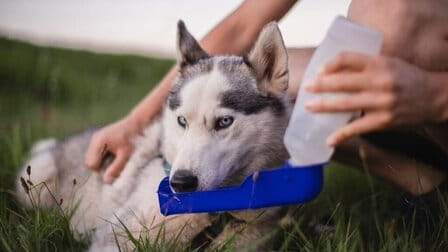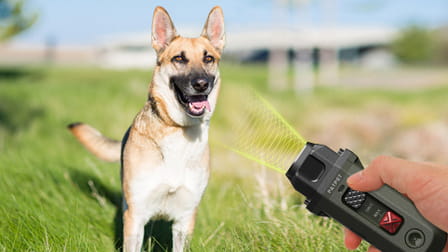You want to put booties on your dog, but how are they supposed to remain on? You're not alone in this; many pet owners, particularly those with squirmy puppies who dislike having their paws handled, have trouble placing dog boots on their animals' paws. If this is your first time, we will introduce for you the way how to make dog boots stay on.
How to Make Dog Boots Stay On
Ensuring a proper fit of dog boots
The first step on the list of how to make dog boots stay on is choosing fit dog boots. Measure your dog's paws: Use a soft measuring tape to measure the length and width of your dog's paw when they are standing. Make sure to measure the widest part of their paw.
Check the manufacturer's sizing chart: Every manufacturer has a different sizing chart, so make sure to check the sizing chart for the specific brand of boots you are purchasing.
Choose the right size: Based on the measurements and the sizing chart, choose the appropriate size of boots for your dog. It's better to choose a slightly smaller size than a larger one, as loose boots can cause discomfort and fall off easily.
Try them on: Once you receive the boots, try them on your dog to check the fit. Make sure they are snug but not too tight or too loose. You should be able to insert a finger between the boots and your dog's paw to ensure there is enough space for movement and circulation.
Adjusting the straps on dog boots
Loosen the straps: Before you put the boots on your dog's paws, loosen the straps completely so that the boots are open and easy to put on.
Put the boots on: Put the boots on your dog's paws one at a time, making sure to position them correctly so that they cover the paw completely. The boots should fit snugly around the paw without being too tight.

Tighten the straps: Once the boots are in place, begin tightening the straps. Make sure to adjust each strap individually so that the boots are snug but not too tight. The straps should be tight enough to keep the boots in place but not so tight that they restrict movement or circulation.
Test the fit: After adjusting the straps, have your dog walk around in the boots to make sure they are comfortable and secure. Make any necessary adjustments to the straps until the boots stay on securely without causing discomfort.
Using socks with dog boots
Using socks with dog boots is the next step on the list of how to make dog boots stay on. Choose the right socks: Use lightweight and breathable socks that fit your dog's paws snugly. Avoid using thick or woolen socks that may cause discomfort or make the boots too tight.
Put the socks on: Put the socks on your dog's paws one at a time, making sure they fit snugly and are pulled up to the top of the paw. This will help prevent the boots from rubbing against your dog's skin and causing irritation.

Put the boots on: Once the socks are in place, put the boots on your dog's paws one at a time. The socks should be fully covered by the boots, with no excess material sticking out.
Adjust the straps: Adjust the straps on the boots to ensure a secure and comfortable fit. Make sure the boots are snug but not too tight, and that the straps are adjusted properly to prevent the boots from slipping off.
Training your vet to wear boots
Introduce the boots gradually: Start by placing the boots near your dog and letting them sniff and investigate them. Then, let your dog wear the boots for a few seconds at a time while giving them treats and praise.

Increase wearing time gradually: Gradually increase the amount of time your dog wears the boots, starting with a few minutes and gradually working up to longer periods. Continue to give treats and praise to encourage your dog to wear the boots.
Practice indoors: Start by practicing indoors on a comfortable surface like carpet or a rug. This will help your dog get used to the boots before trying them on rough or uneven terrain.
Use positive reinforcement: Whenever your dog wears the boots, give them lots of treats, praise, and positive reinforcement. This will help them associate the boots with positive experiences and make them more comfortable wearing them.
Monitor your dog: While your dog is wearing the boots, monitor them closely for any signs of discomfort or irritation. If your dog seems uncomfortable, you can take the boots off then try again later.
Checking the boots during use
Check the fit: Before putting the boots on your dog, check that they fit properly and are snug but not too tight. If the boots are too loose, they may fall off or rub against your dog's skin, causing discomfort.

Check for wear and tear: During use, check the boots regularly for any signs of wear and tear. Look for holes, tears, or loose stitching, which can cause the boots to become less effective or uncomfortable for your dog.
Check for slipping: While your dog is wearing the boots, keep an eye out for any signs of slipping or shifting. If the boots are slipping, adjust the straps or consider using socks to provide a more secure fit.
Monitor your dog's behavior: Watch your dog for any signs of discomfort or irritation while wearing the boots. If your dog seems uncomfortable, remove the boots and try adjusting the fit or using a different type of boot.
Clean the boots: After use, clean the boots thoroughly to remove any dirt or debris. This will help extend the life of the boots and ensure they are ready for use the next time you need them.
Conclusion
Hope the list on how to make dog boots stay on is useful for you. It might be difficult to choose the best dog boots for your pet. While selecting the best dog boots, there are many things to take into account, including the materials, size, weight, and style. After making sure your boots are suitable, you'll need to teach your dog how to walk in them. To determine the length and width of your dog's paw, measure the lines. Also, to make sure the boots are sturdy and cozy for your dog, examine them and pick the finest brands.













